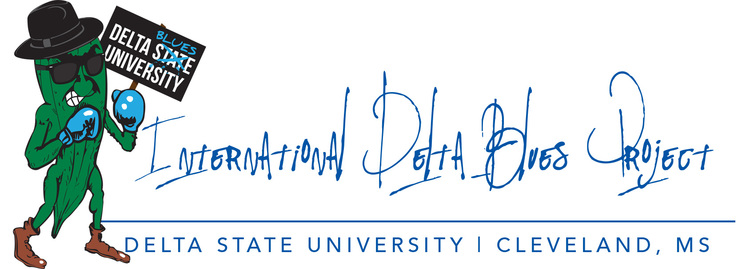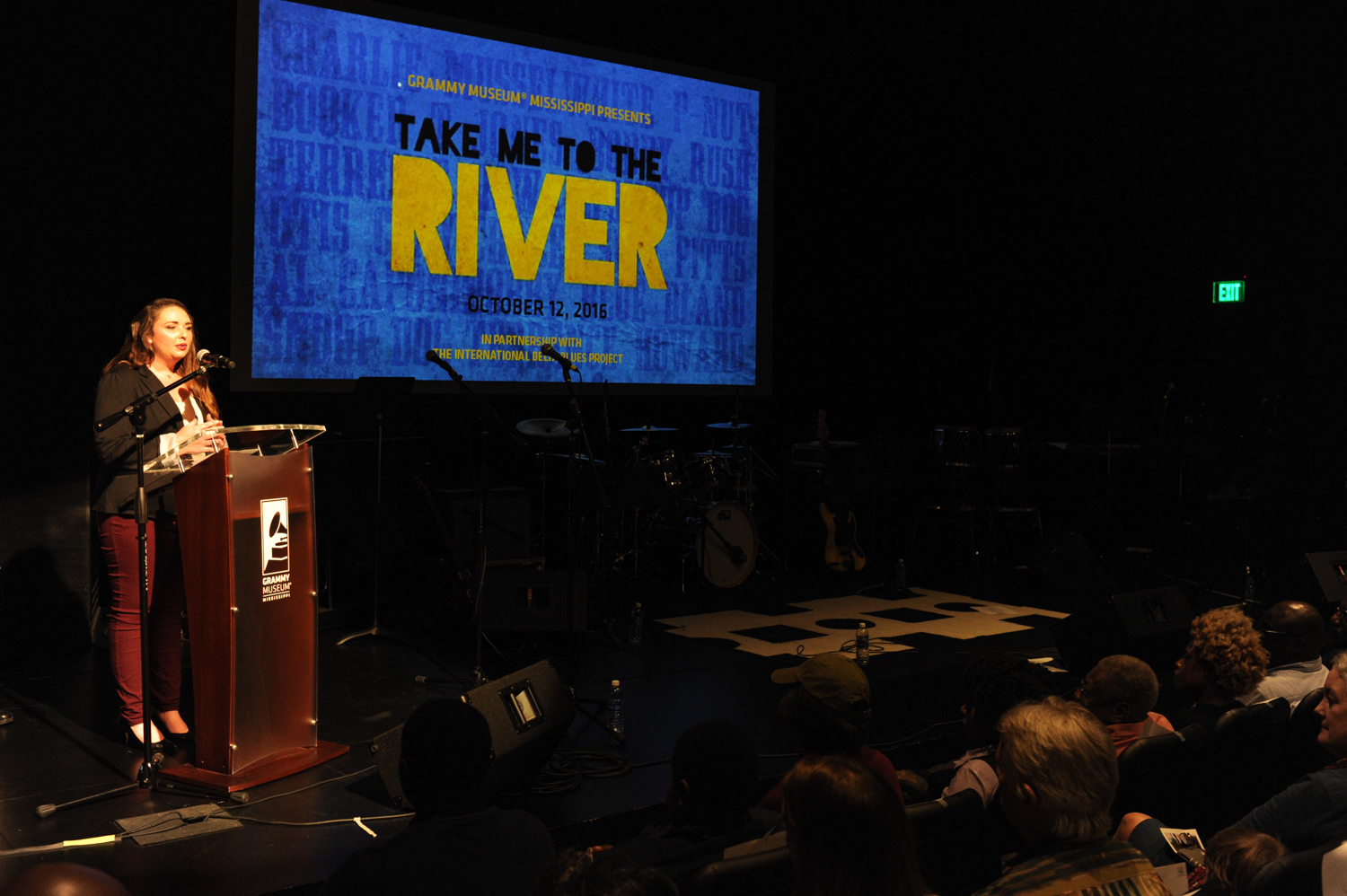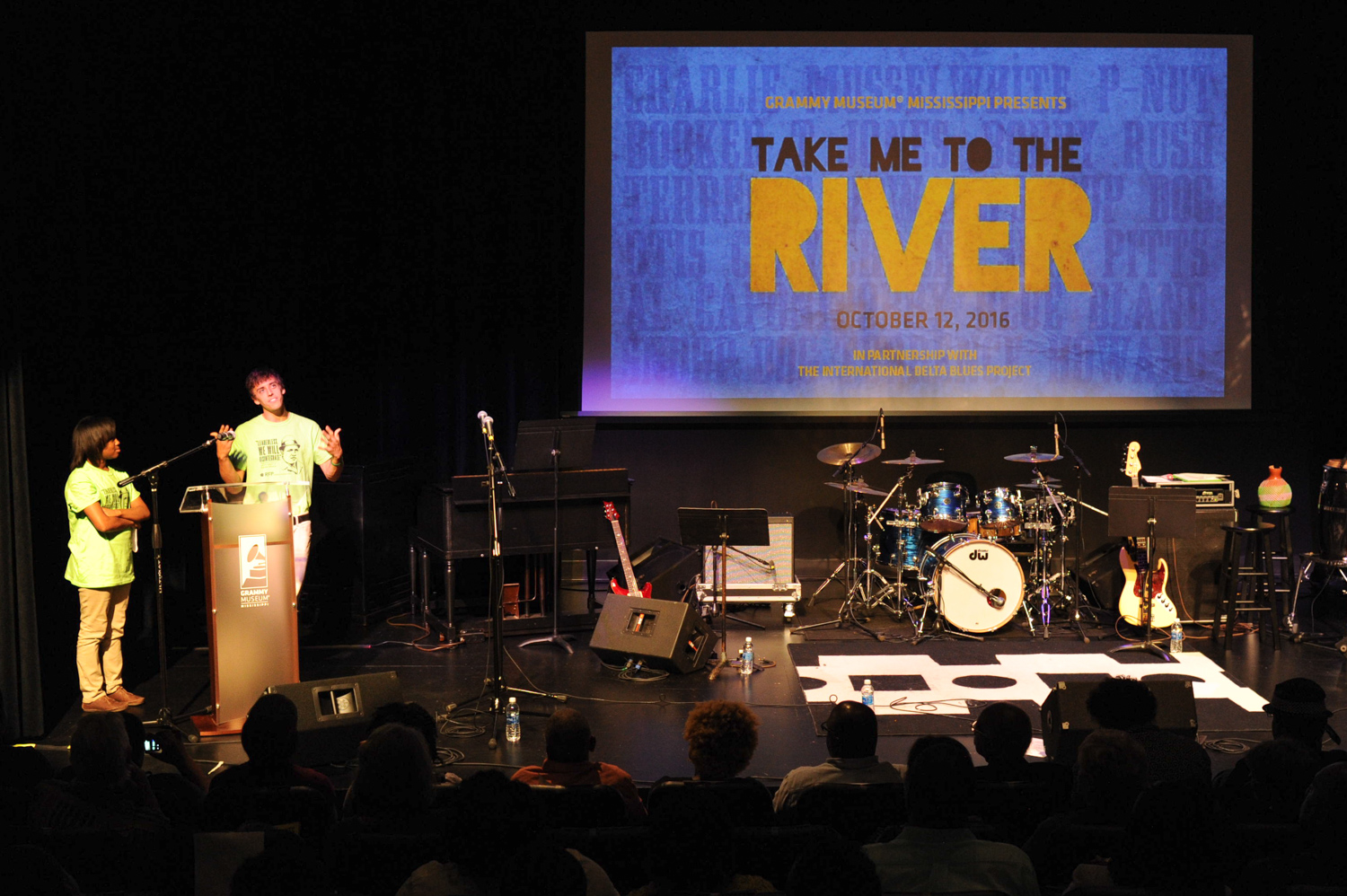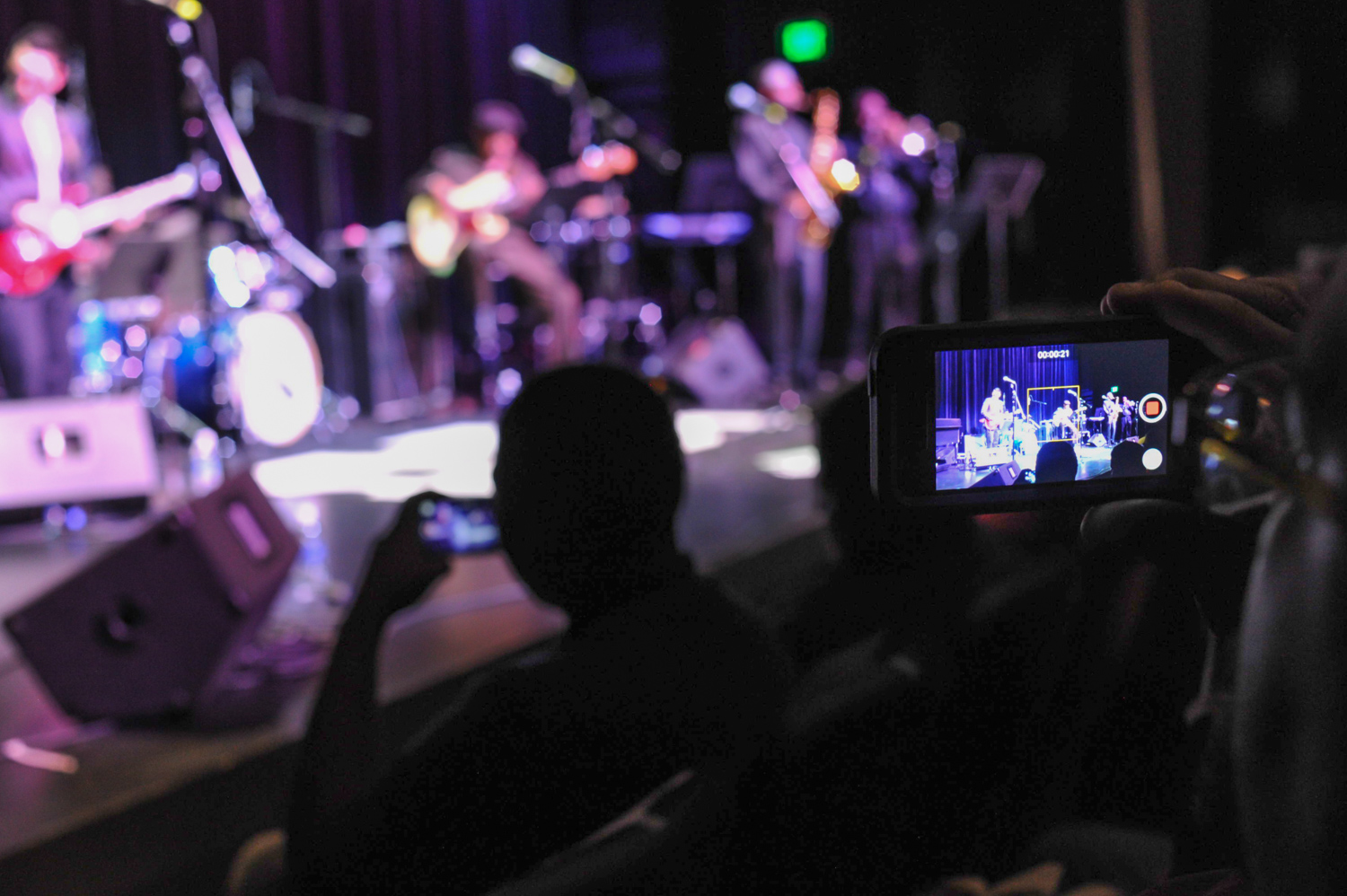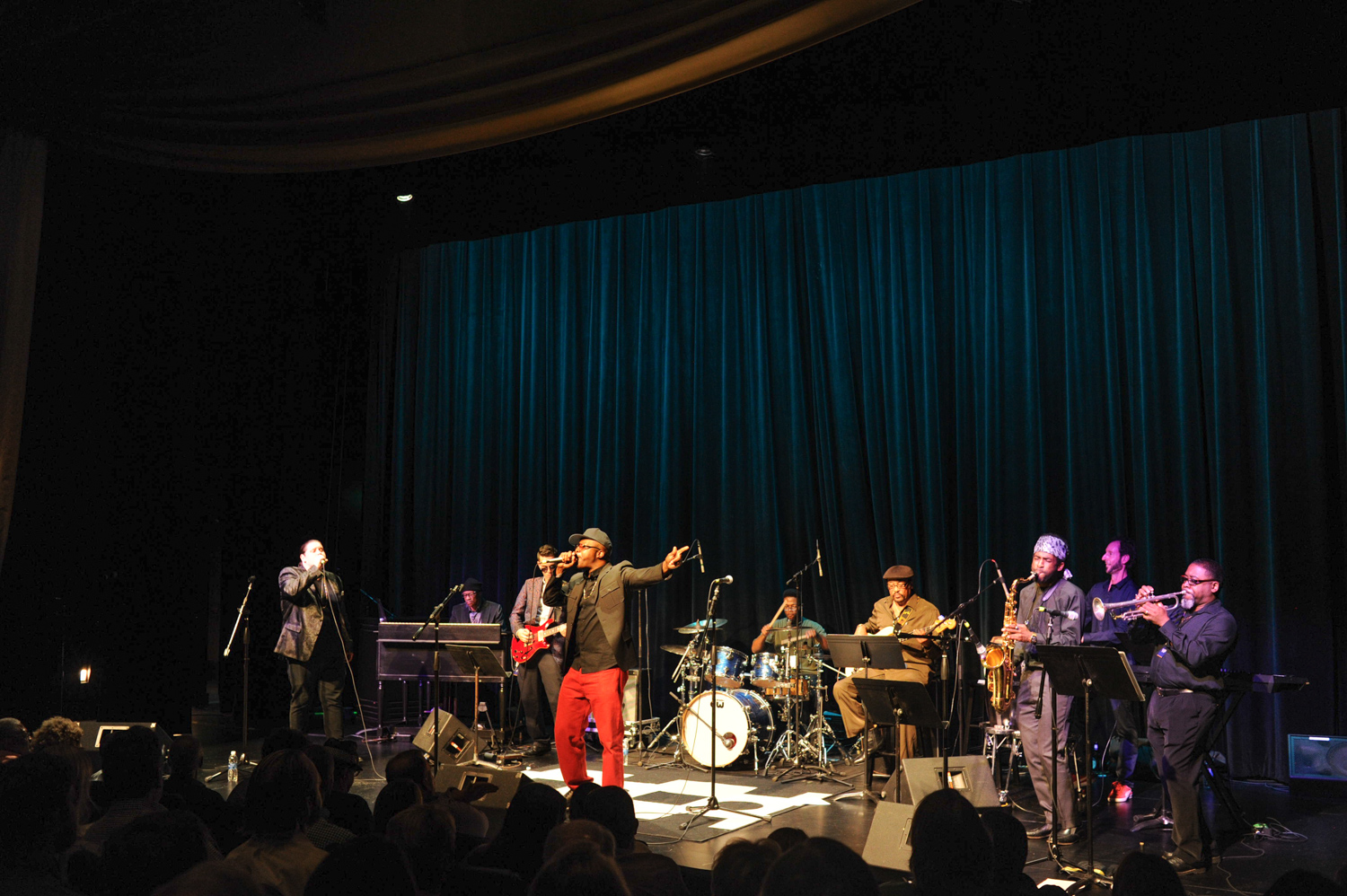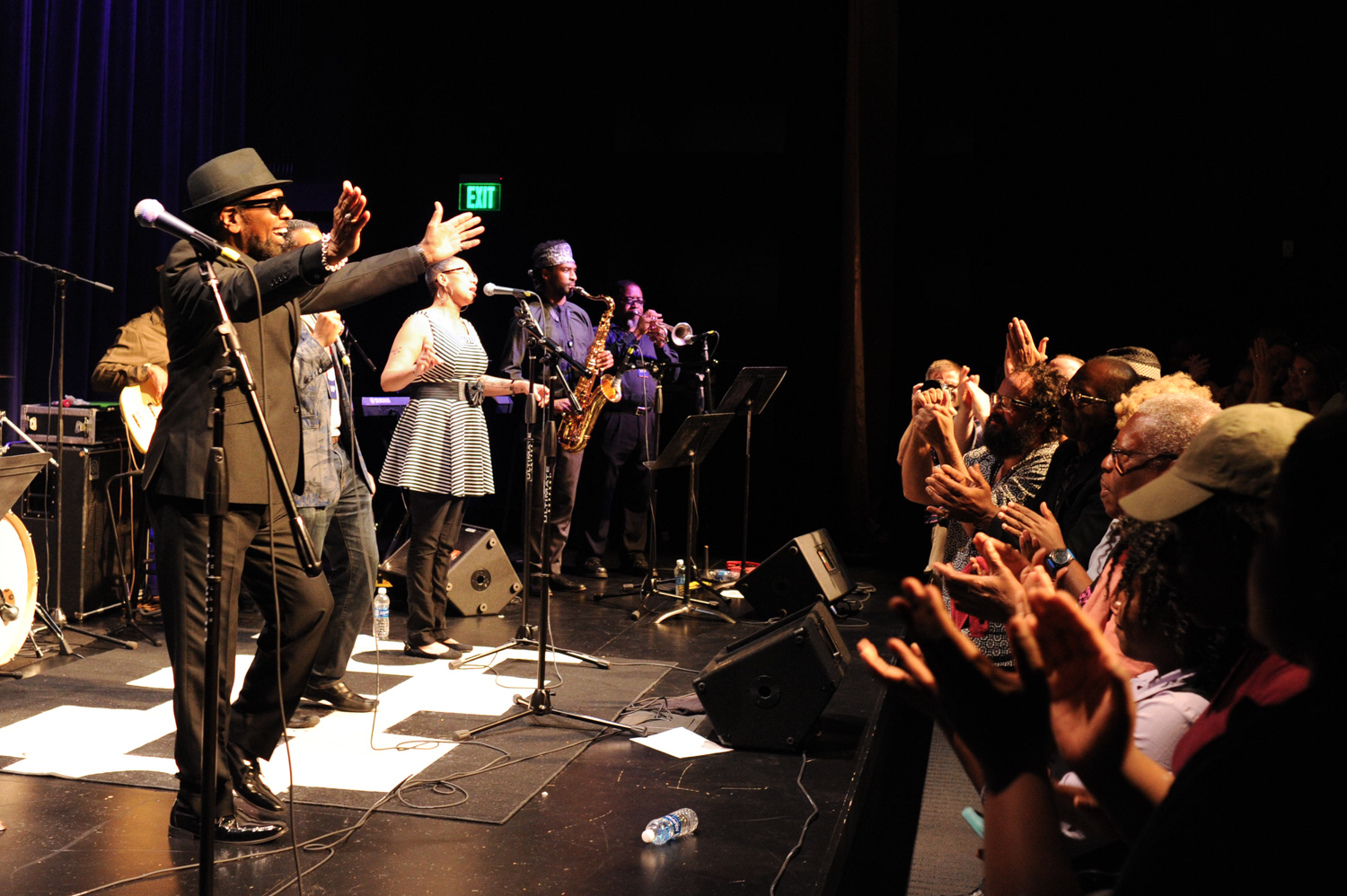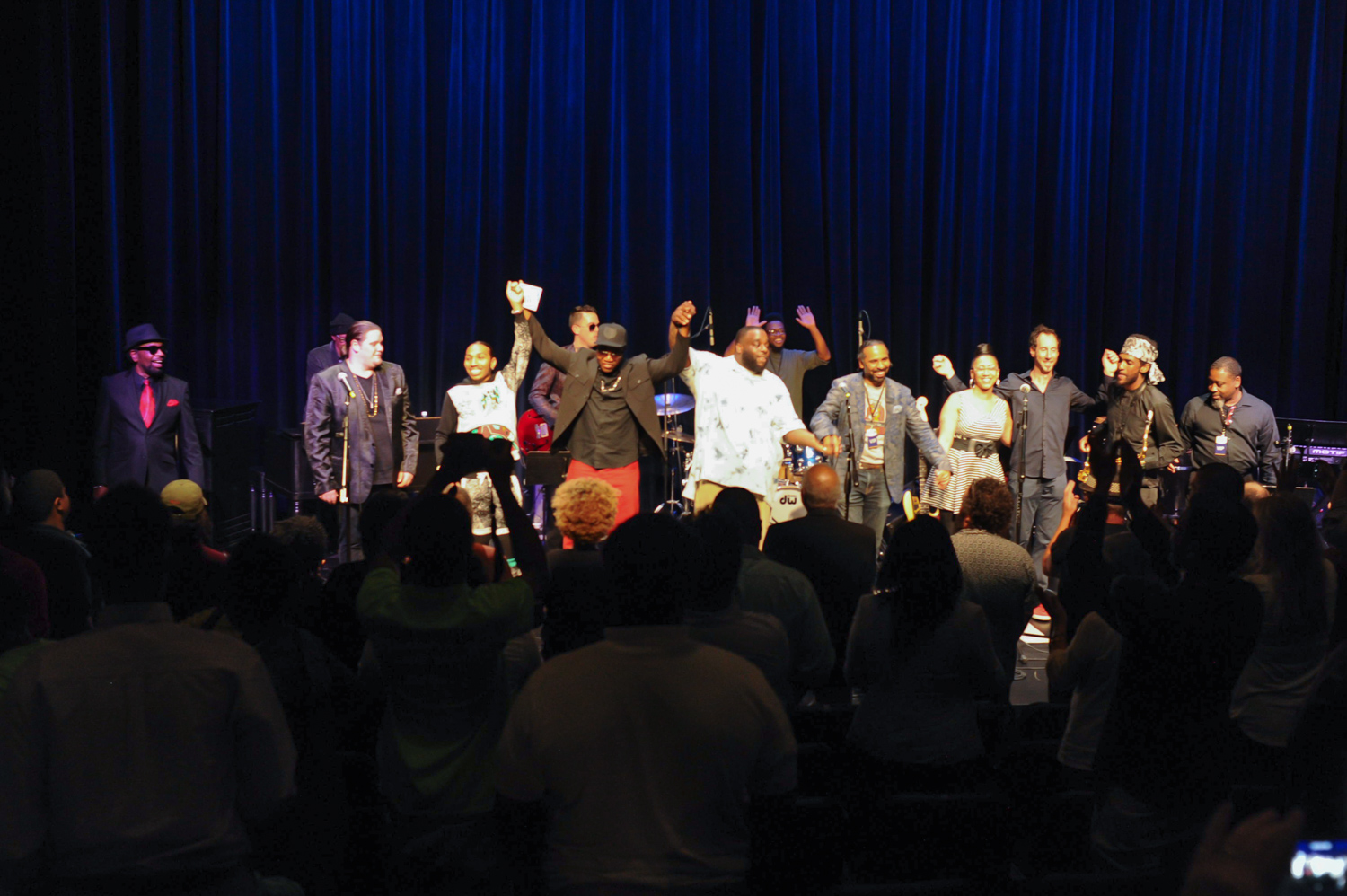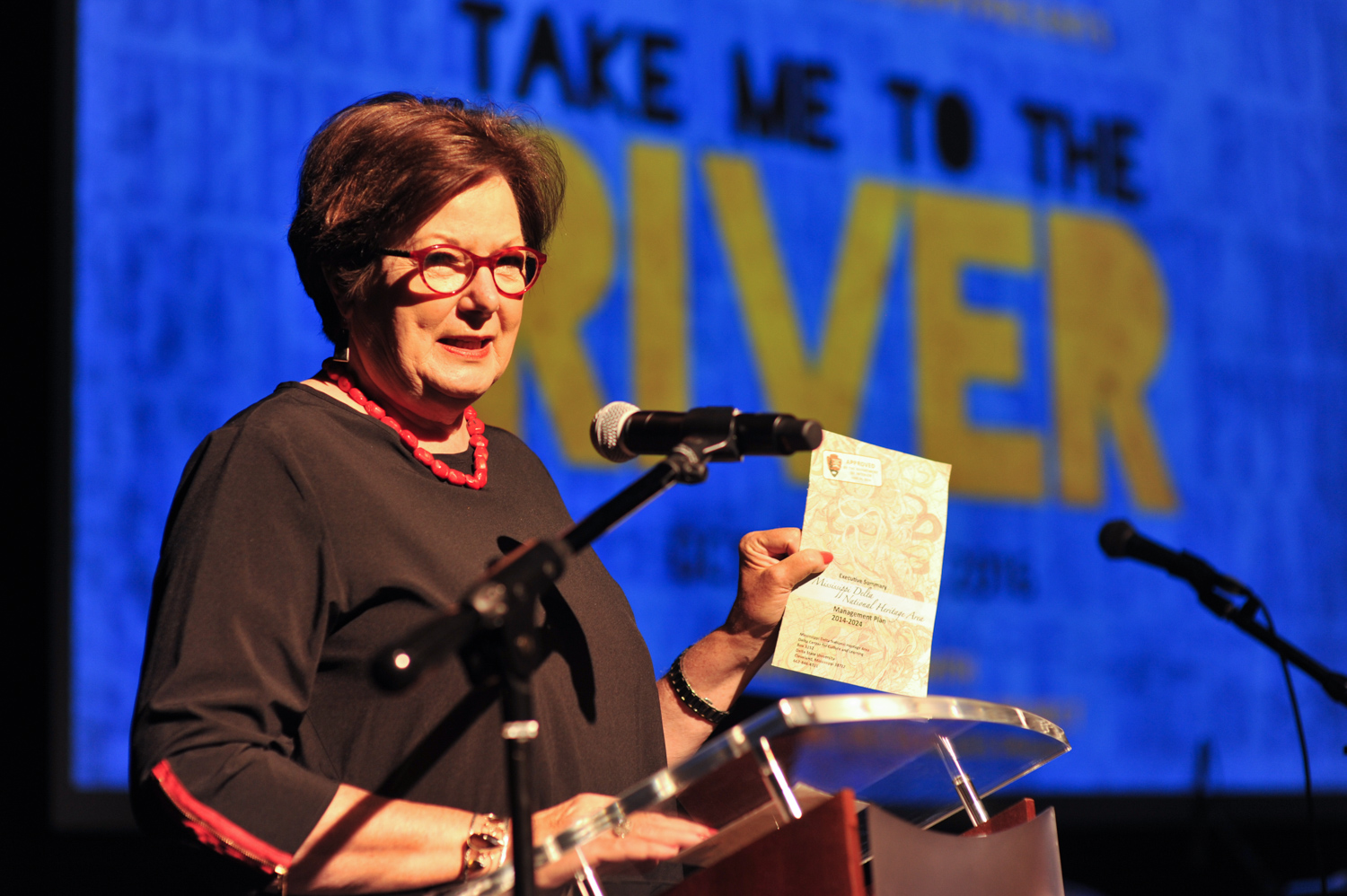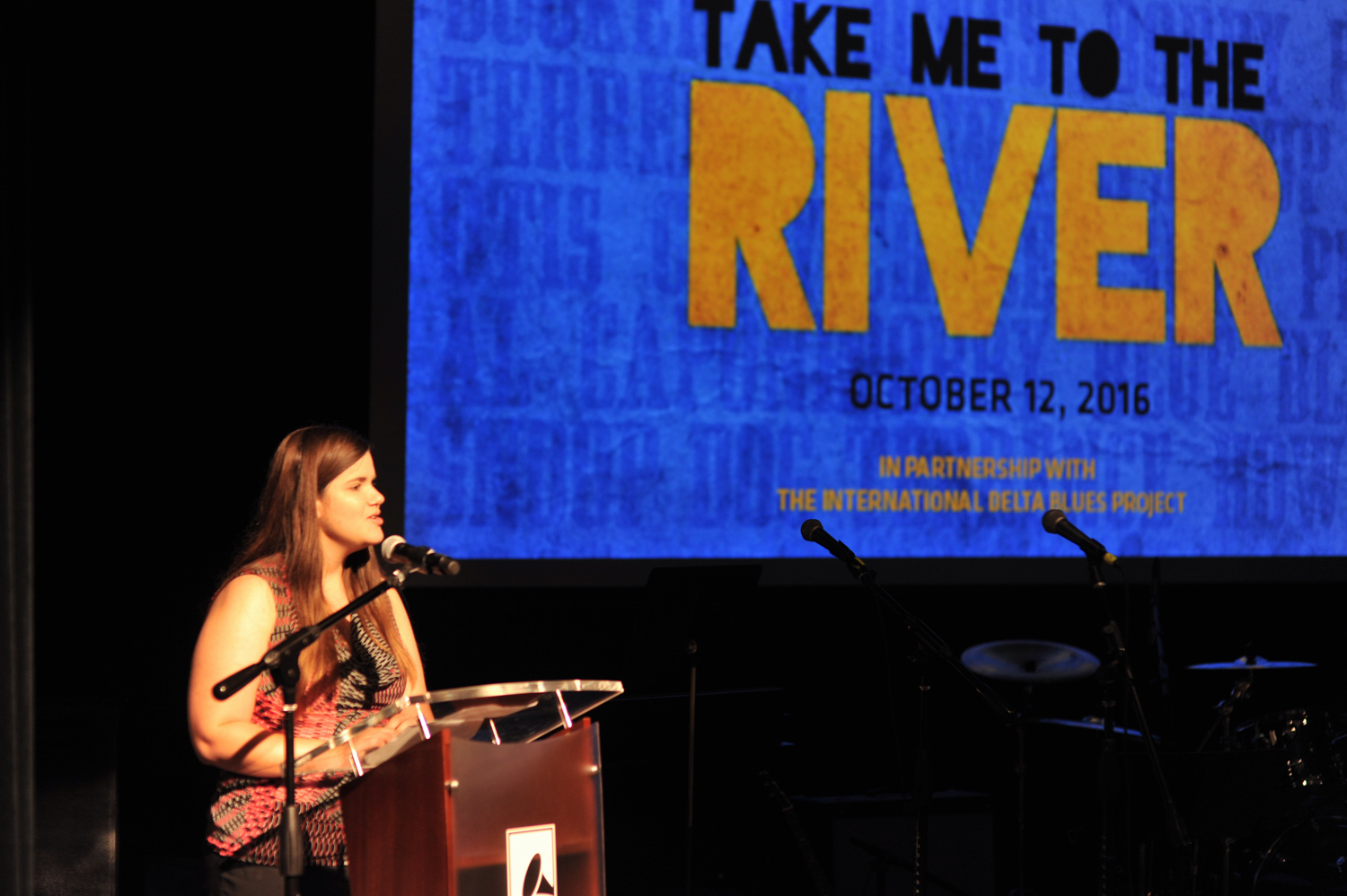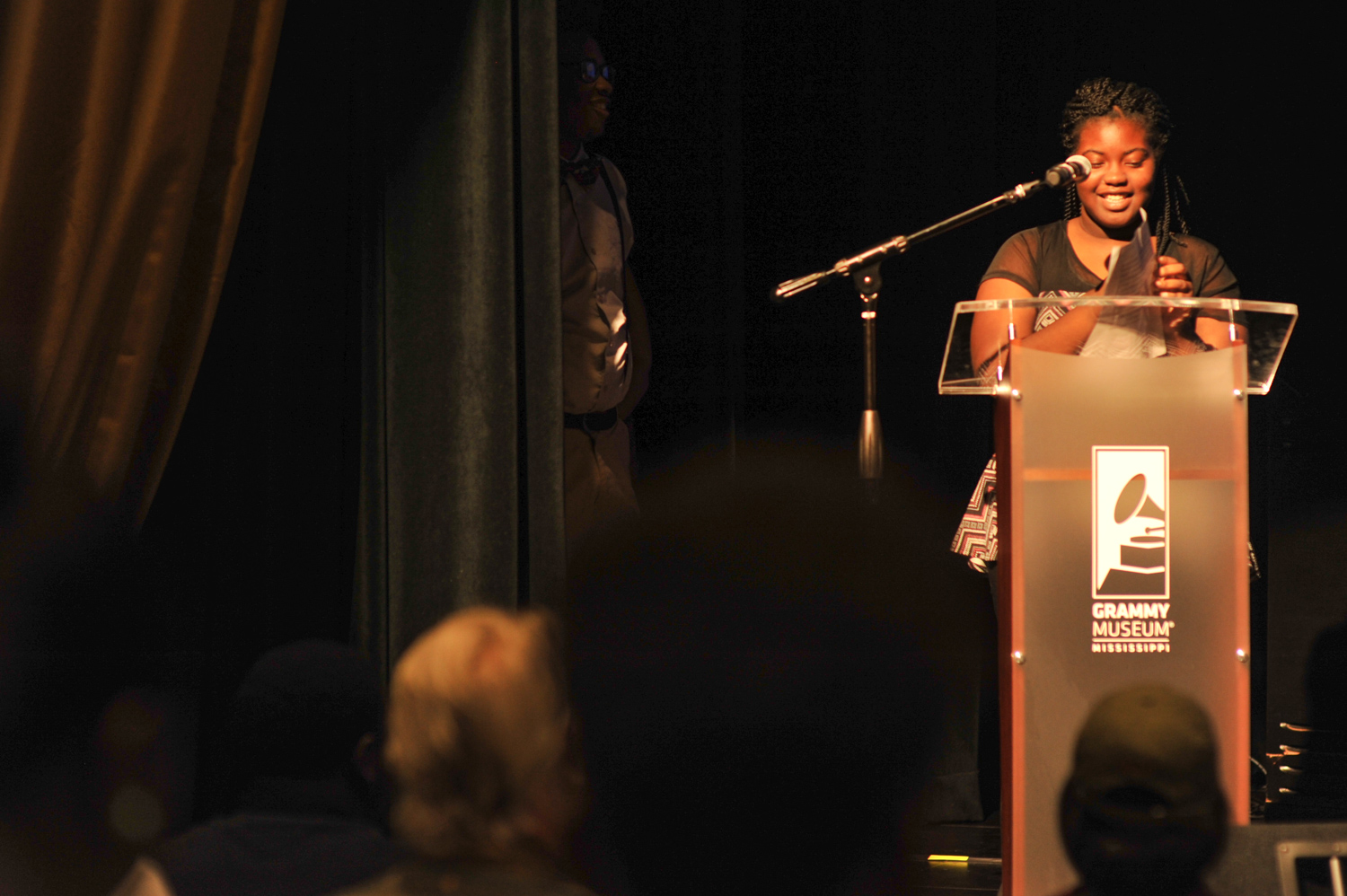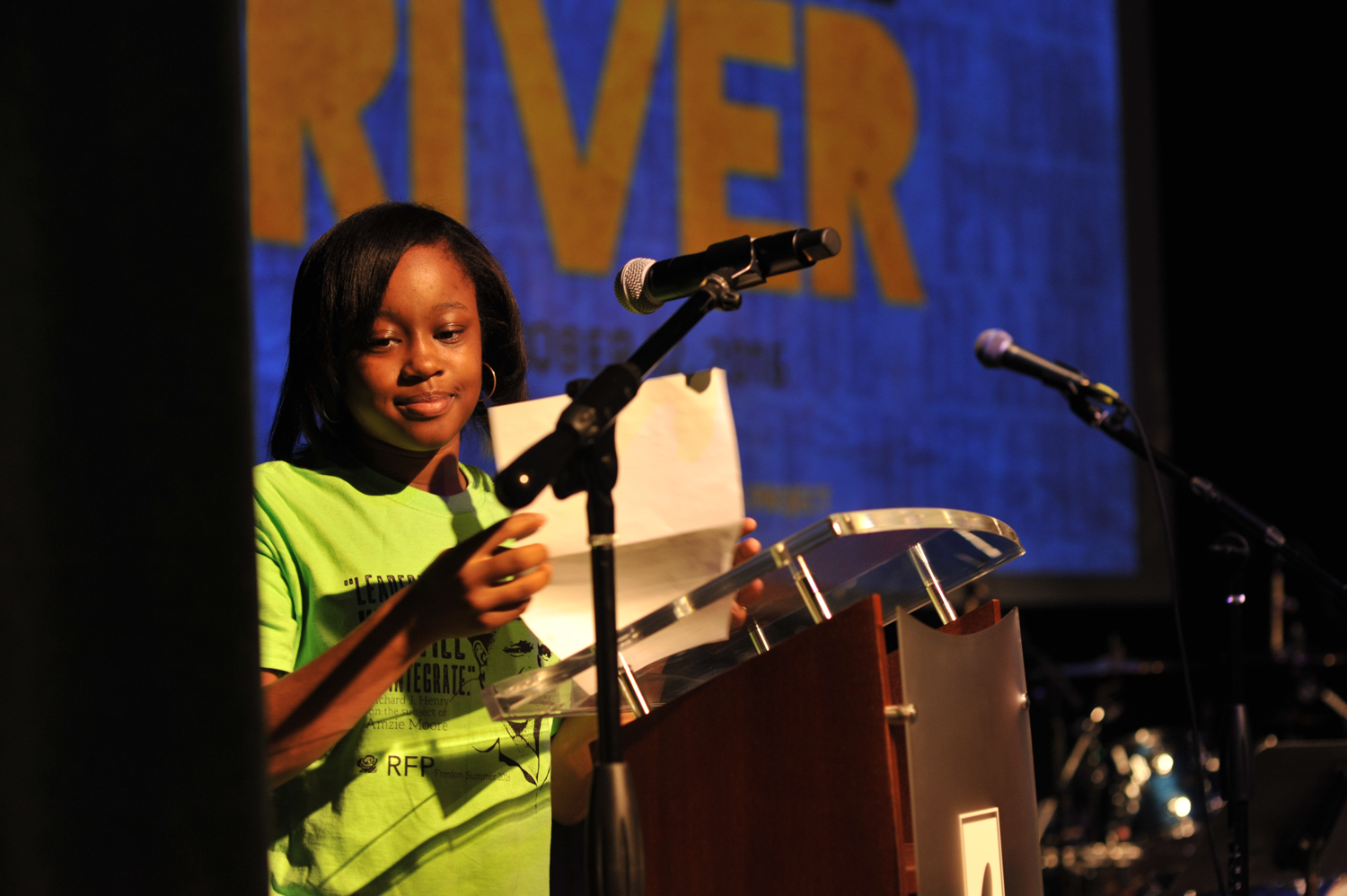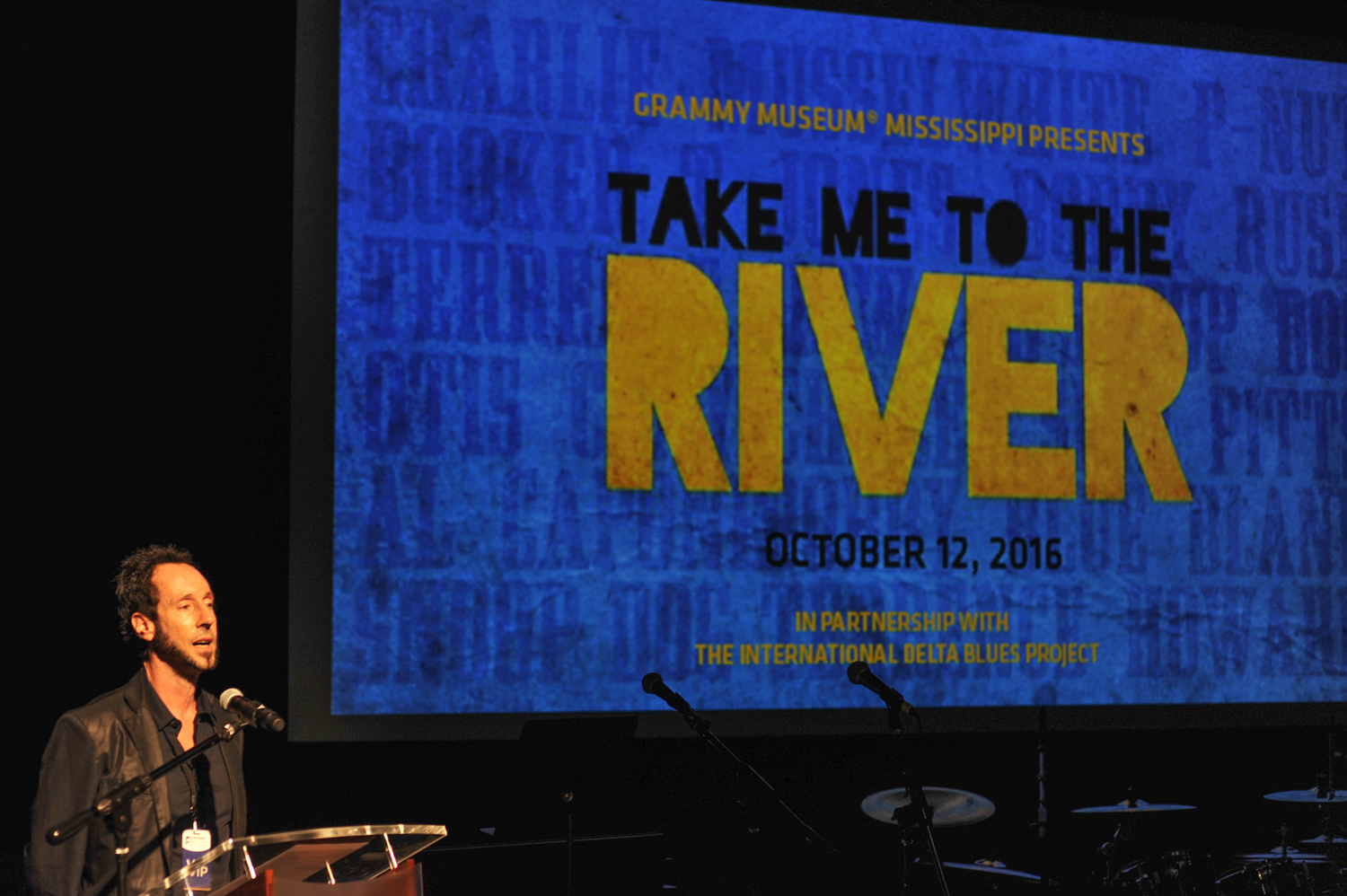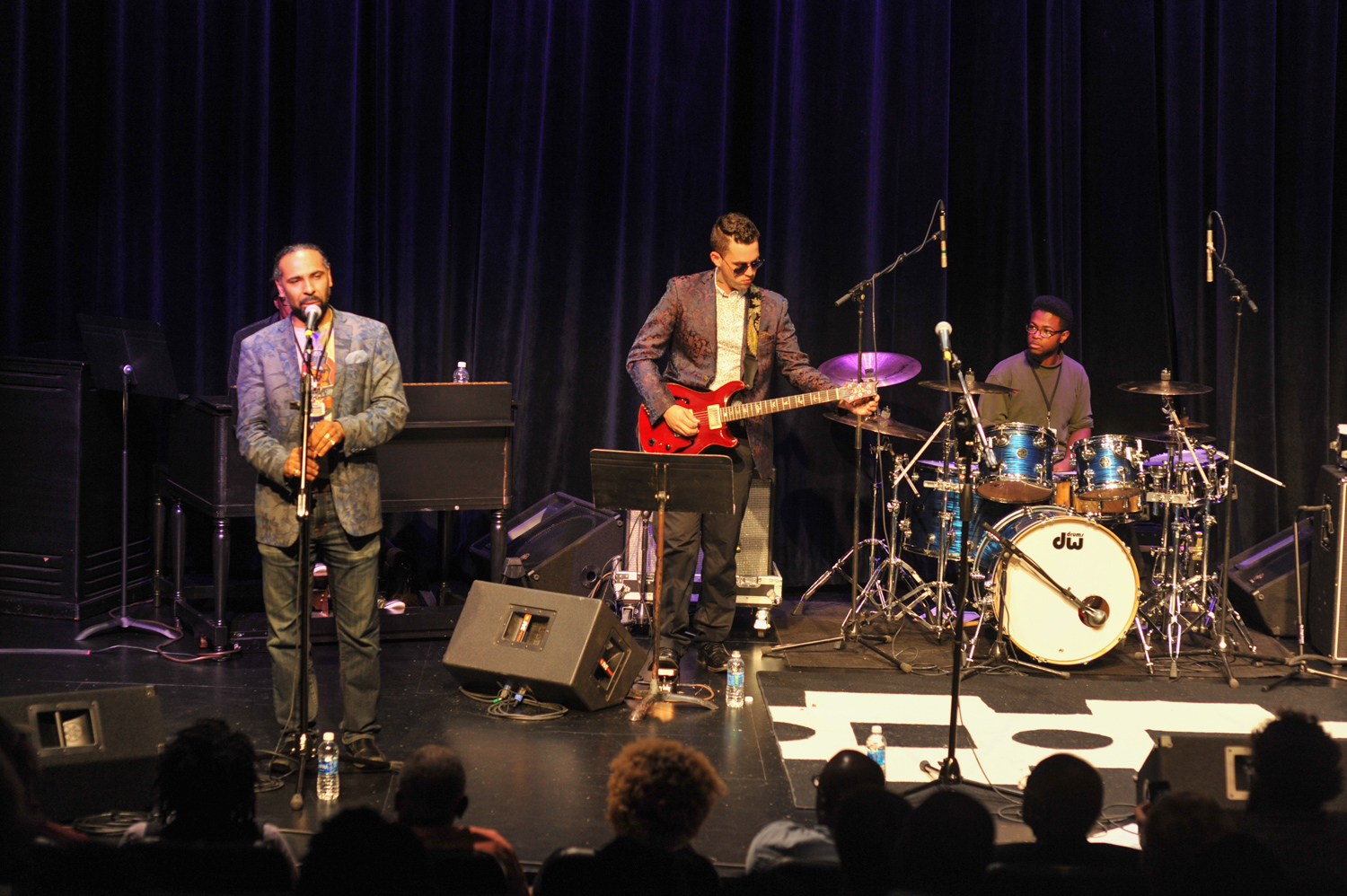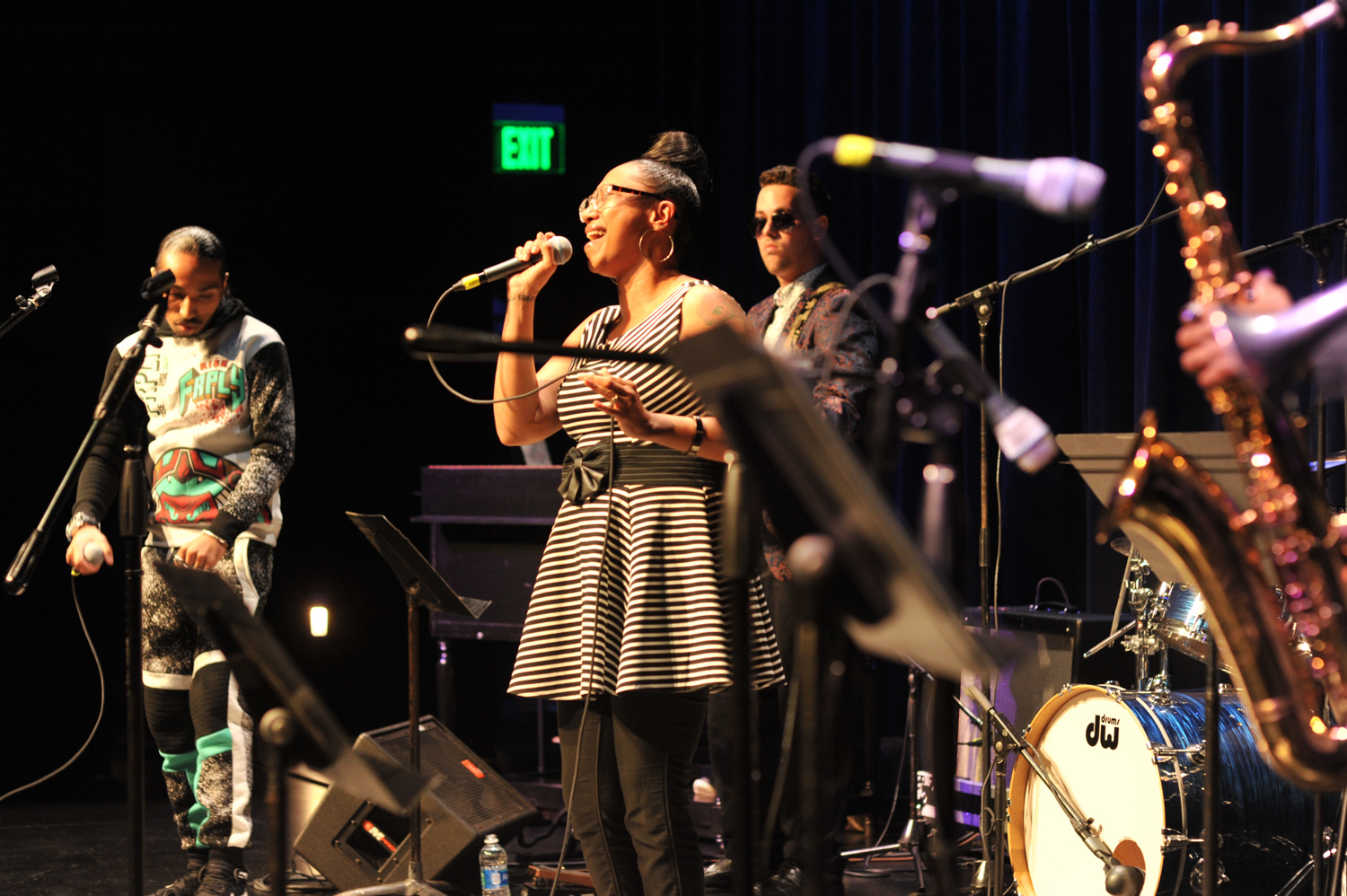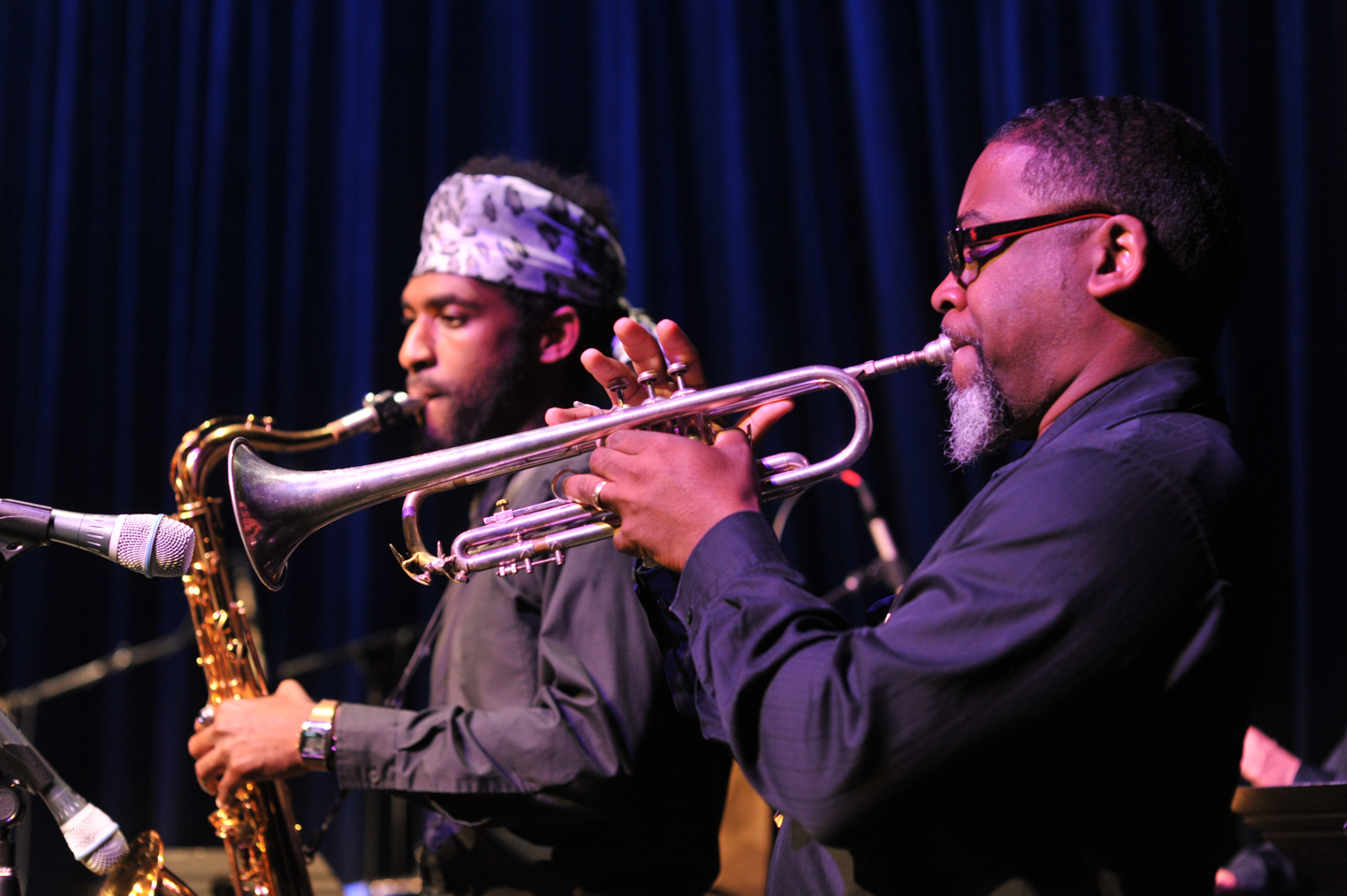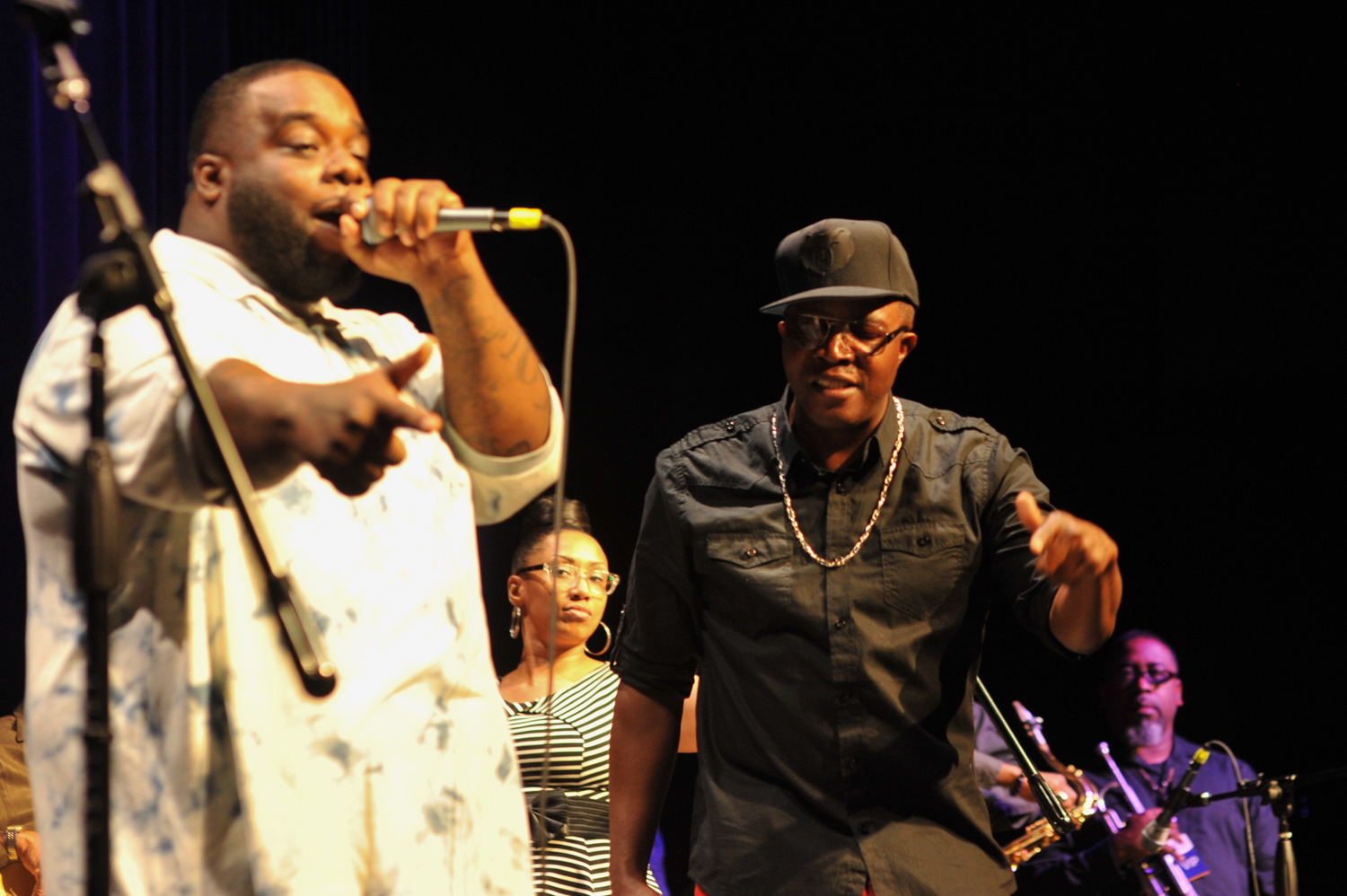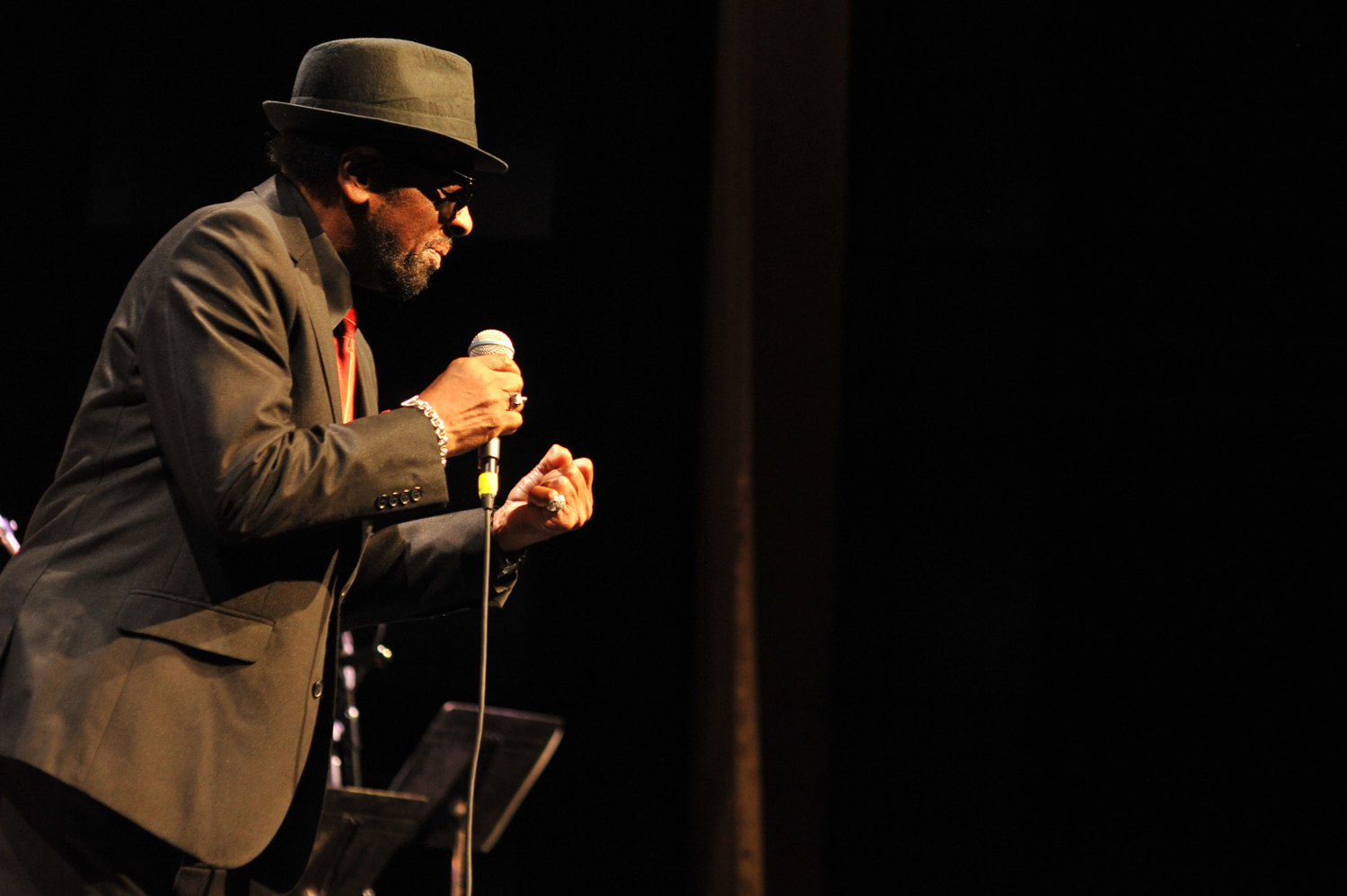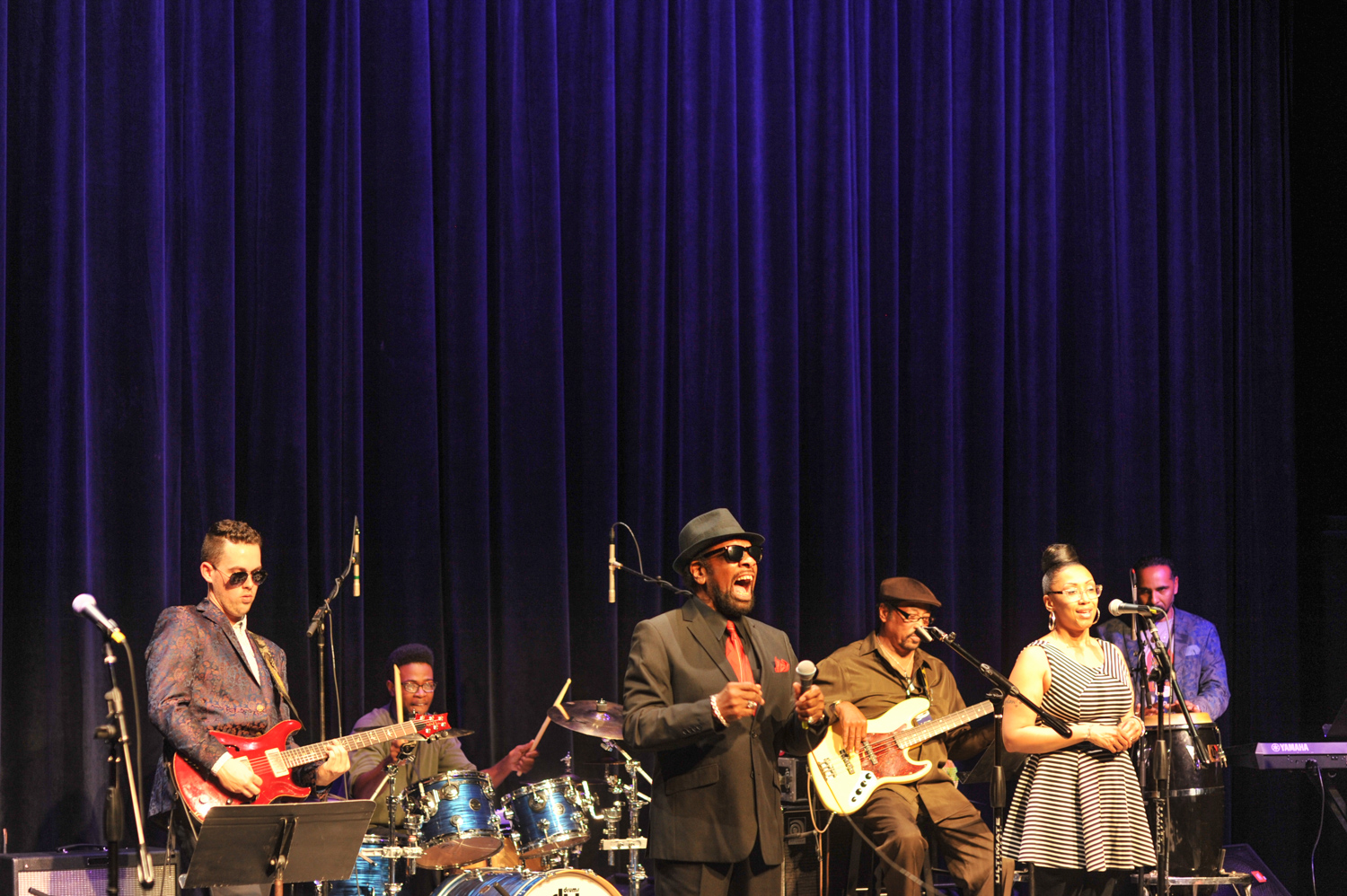William Bell acknowledges the audience for their standing ovation following his performance.
The Delta Center's International Delta Blues Project at Delta State University recently partnered with GRAMMY Museum Mississippi to present a free, public event of educational film and live music.
The "Take Me to the River" community film screening is one of several Blues Leadership Incubator events that have been offered by the International Delta Blues Project. Blues Leadership Incubator events focus on economic opportunity related to Blues education and tourism in the Mississippi Delta. These events are free and open to the public through a generous grant from the Robert M. Hearin Support Foundation.
Nearly 150 guests from throughout the Mississippi Delta gathered at GRAMMY Museum Mississippi to see a 45-minute version of the critically-acclaimed documentary “Take Me to the River,” produced by Martin Shore and created at historic Royal Studios in Memphis. The film brings multiple generations of award-winning Memphis and Mississippi Delta musicians together, following them through the creative process of recording an historic new album. “Take Me To The River” features Terrence Howard, William Bell, Snoop Dog, Mavis Staples, Otis Clay, Lil P-Nut, Charlie Musselwhite, Bobby "Blue" Bland, Yo Gotti, Bobby Rush, Frayser Boy, The North Mississippi Allstars and many more.
Martin Shore introduces his film Take Me to the River
After viewing “Take Me to the River," the crowd enjoyed live performances from The Hi Rhythm section (featuring Charles and Leroy Hodges), Stax Music Academy Alumni Band, William Bell, Frayser Boy, Al Kapone, and GRAMMY winner Lawrence “Boo” Mitchell, owner of Royal Studios. Boo Mitchell recently served as keynote speaker for Delta State's International Conference on the Blues during a Blues Brunch held at GRAMMY Museum Mississippi.
According to Frayser Boy, an Academy Award winner for Best Original Song, these performances are as much about education as they are entertainment.
“I come from a hip-hop background. I never really used live music in performances before I was invited to be a part of this project, “ he said. “But these guys have taught me more in a couple of years than the fifteen or so previous years I was working in this business. All these old guys - these guys that have spent their lives making music - they taught me to better understand where music comes from, and how important it is to our communities. Just as importantly, they are teaching me how to make a career out of this, not just a single record. To do that, I need to know where my music comes from and why it was made the way it was made.”
Attendees linger in the lobby of the museum and visit with the musicians following the performance.
To underscore the educational emphasis of the event, the Mississippi Delta National Heritage Area was invited to open the program with oral history documentaries created by students from Delta Hands for Hope of Shaw, MS, and the Rosedale Freedom Project of Rosedale, MS. The students attended after-school workshops learning film and oral history skills through a grant from the Mississippi Delta National Heritage Area. The students interviewed and photographed Mississippi Delta residents to learn how music has influenced their lives.
“The Take Me To The River program was one of the best nights of music we’ve had at the Museum,” said Jane Marie Dawkins, Education and Public Programs Manager for the museum. “The artists, film and student projects all provided a very entertaining and educational experience. It meant a lot to us to showcase this music from our region, and it was an unforgettable night at GRAMMY Museum Mississippi.”
The mission of The Delta Center is to promote greater understanding of Mississippi Delta culture and history and its significance to the world through education, partnerships and community engagement. The Delta Center serves as the management entity of the Mississippi Delta National Heritage Area and is the home of the International Delta Blues Project and the National Endowment for the Humanities “Most Southern Place On Earth” workshops. For more information, visit http://deltacenterdsu.com/.
